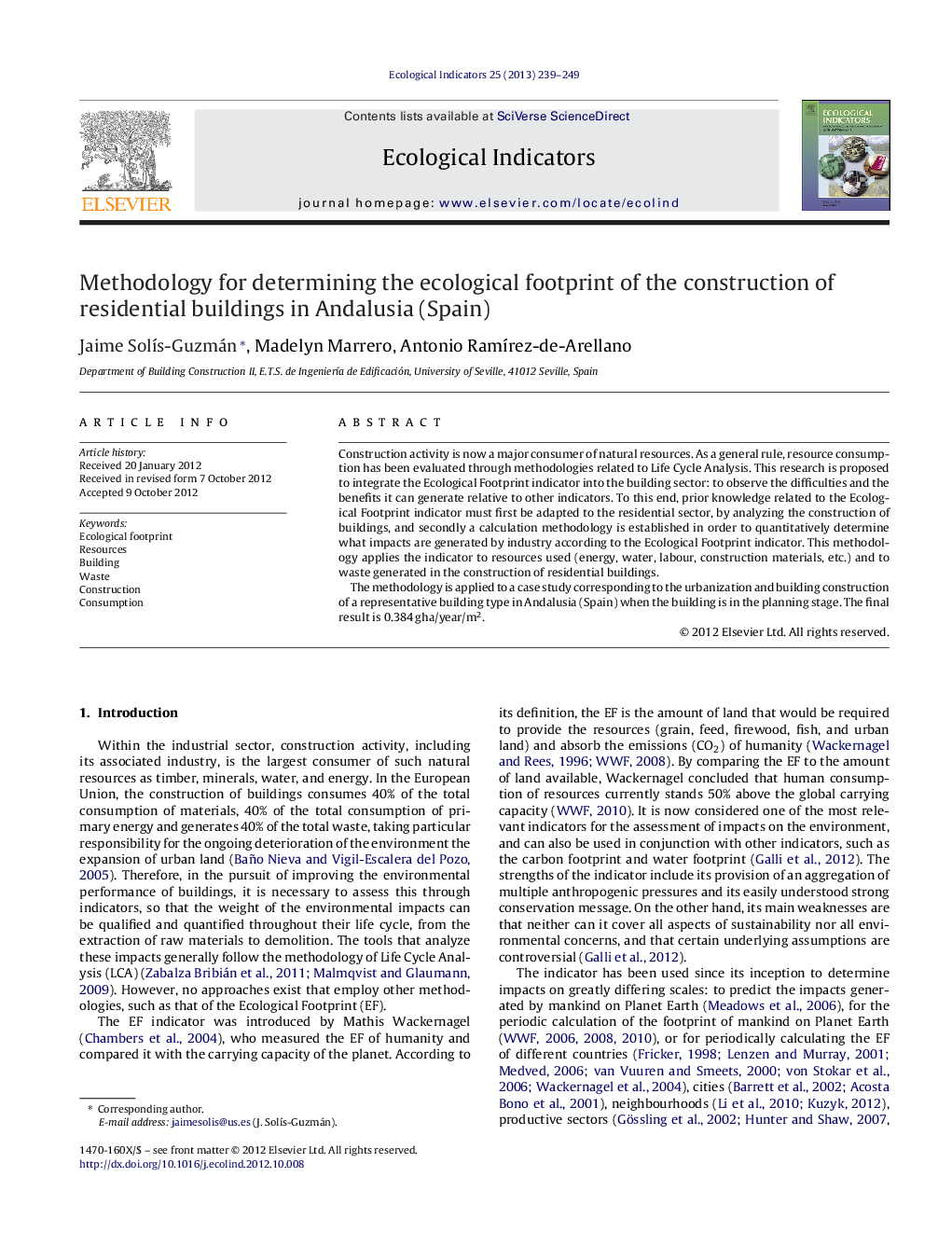| Article ID | Journal | Published Year | Pages | File Type |
|---|---|---|---|---|
| 4373606 | Ecological Indicators | 2013 | 11 Pages |
Construction activity is now a major consumer of natural resources. As a general rule, resource consumption has been evaluated through methodologies related to Life Cycle Analysis. This research is proposed to integrate the Ecological Footprint indicator into the building sector: to observe the difficulties and the benefits it can generate relative to other indicators. To this end, prior knowledge related to the Ecological Footprint indicator must first be adapted to the residential sector, by analyzing the construction of buildings, and secondly a calculation methodology is established in order to quantitatively determine what impacts are generated by industry according to the Ecological Footprint indicator. This methodology applies the indicator to resources used (energy, water, labour, construction materials, etc.) and to waste generated in the construction of residential buildings.The methodology is applied to a case study corresponding to the urbanization and building construction of a representative building type in Andalusia (Spain) when the building is in the planning stage. The final result is 0.384 gha/year/m2.
Graphical abstractFigure optionsDownload full-size imageDownload as PowerPoint slideHighlights► Methodology of ecological footprint for buildings. ► Building and urbanization project of two purpose-built blocks were studied. ► Based on the overall results, the most representative type of footprint is that of fossil fuels.
